Paying to get a dent out of your car doesn’t always have to be costly. Oftentimes, we’re willing to pay whatever it costs to get dents out of a car. After all, no one likes riding around in a dent-up vehicle. However, before you go to an expensive auto shop and pay too much for an extremely small bent, you should know there are some dents you can fix yourself.
This article will highlight five dents you can remove yourself (some a little harder than others) and eight different methods you can apply toward getting a dent out your car.
Car Dents You Can Remove Yourself
Using a few simple tools, here are some car dents you can likely remove without having to take your vehicle to a body shop. We’ll start from the hardest to the easiest.
- If your dent has a crease: This won’t be an easy dent to remove. In fact, if you’re not skilled in this area, you may not even want to try it yourself. You’ll likely have to fill what doesn’t come out with body auto fill (there’s more about how to do that below). You should also expect to lose a little bit of paint, so be prepared to spray touch-up paint in that area, as well.
- If your dent is in the door: These dents are hard to get to. You’ll likely have to strip the inside interior panel off the door. At that point, you’ve got a problem because the window and window frame take up a lot of that space. Depending on how close the dent is to the window frame, it may or may not be workable for you due to a lack of space. However, you may still be able to pull it out from the exterior side without having to even go near pulling interior panels off. If the dent is about halfway down the door and pretty much central, you should be able to tackle that one, regardless.
- If your dent is in the roof: If the skeletal structure has been avoided, this should not be too difficult to remove. What I mean by this is that your roof is built on a rigid platform for rollover safety, but it contains a lot of empty spaces. Next time you’re in your car put your hand on the headlining and move it around, you’ll be able to feel the differences in the structure underneath.
- If your dent is in the trunk and hood: These dents are usually pretty easy to remove. Just like the roof, the hood and the trunk have a skeletal structure. Open both up and you’ll easily see this framework. If your dent has avoided the cross structure, it should be easy to tape it from the inside. You may also be able to pull these dents out, just like with the door dent.
- If your dent is in the panel: This is the easiest dent of all to get out. However, if the dent is on a corner, you’ll have a crease, and you’ll end up using body filler.
6 Tools To Use When Removing a Car Dent Yourself
Now that you know the types of dents you can remove yourself, you need to know the tools you can use to help remove the dents.
1. Plunger
Just as you use a plunger for your sink, the same concept applies to removing a car dent. This method works best on dents on doors or side panels as suction is created to lift the dent right out. You’ll want to use a cup plunger and not a flange plunger as this won’t produce the suction you need to get the dent out. You also want the plunger to cover the full width of the dent, so measure the diameter of your dent and match it up to a plunger that will cover it. First, wet the plunger and the dent and give a few pulls to see it release. Don’t be too aggressive though, as the dent may need more than the suction a plunger can provide.
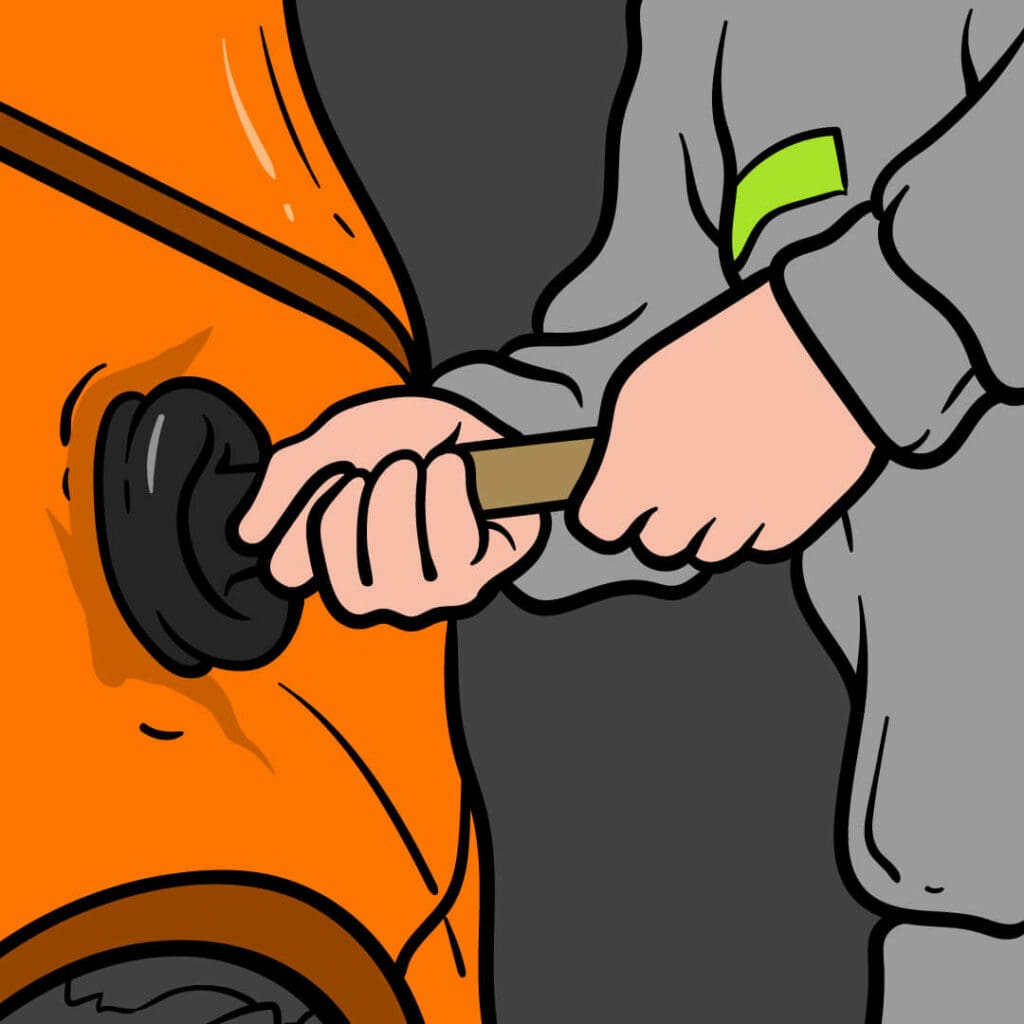
2. Boiling Water
Thanks to plastic bumpers on most cars today, boiling water works well at removing dents. If you have a dent on your bumper, apply boiling water to it to make it easier to push the dent out of the plastic. Just heat boiling water and pour it over the dented area. Reach your hand behind the dent and push it out with your hands. The plastic should be soft because it is warmed up and will be able to release the dent more easily.
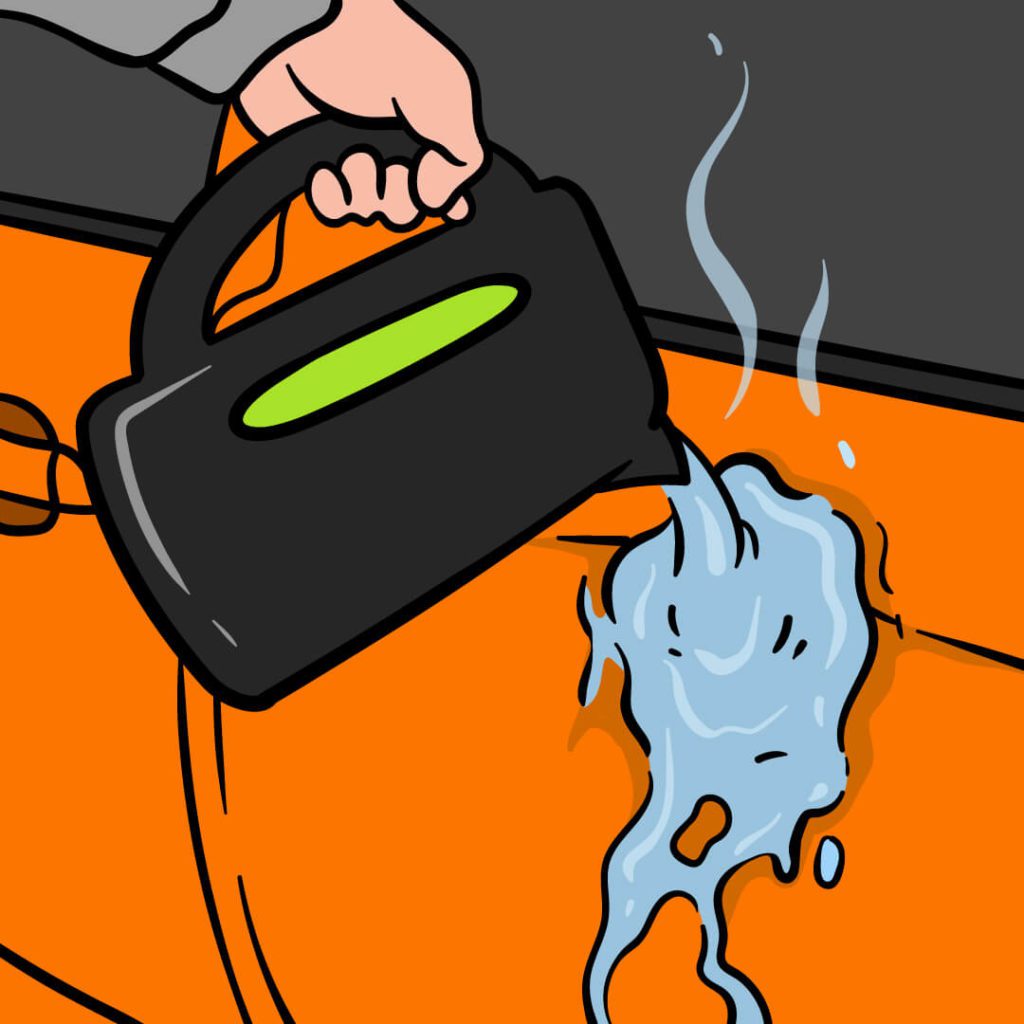
3. Dry Ice/Hairdryer
You may even be able to use dry ice to remove your car dent. Remember to wear protection when handling dry ice. The simple procedure of rubbing dry ice on the dent can cause it to pop out on its own rather quickly. Apply the dry ice directly to the dent. Rub it all over the damaged area and wait to see if the dent pops out on its own. Repeat the process as much as needed. In some instances, it may be best to use a hairdryer to heat the surface before you apply the dry ice. That allows the plastic of the car to expand and contract with the heat of the hairdryer and the cold of the dry ice. Either method should work.
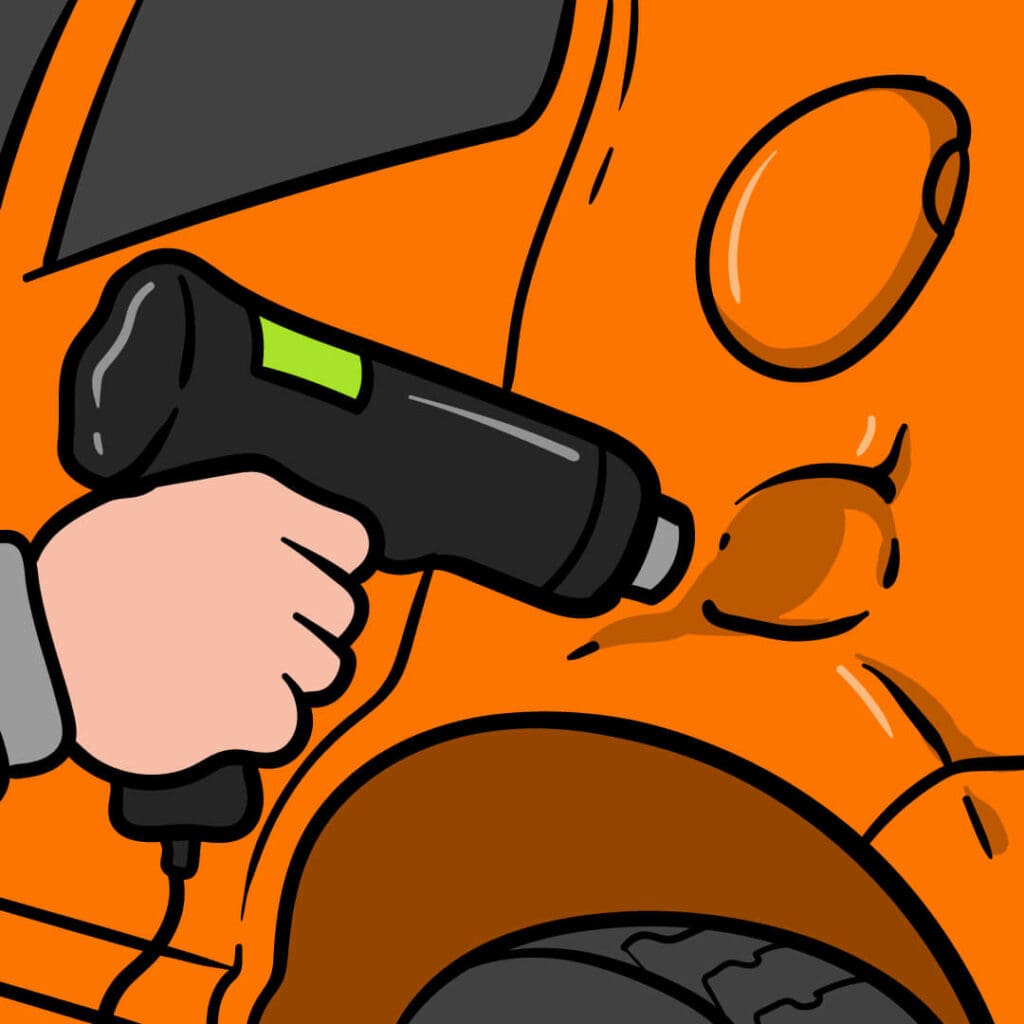
4. Hairdryer/Compressed Air
This method uses a combination of hot air and cold air to remove the car dent. The two working together, allow a dent to pop out on its own. The hairdryer makes the plastic expand in the dent and the compressed air is cold and makes the plastic contract, popping the dent out. Heat the car dent with a hairdryer at the highest setting you can. Get it as hot as possible and then use a can of compressed air to blow on the dent. The cold air will contract the plastic and allow the dent to pop out on its own.
5. Vacuum Cleaner/Bucket
Make a small hole in the bottom of the bucket. Cover the dent with the upper part of the bucket. Put the vacuum cleaner tube over the hole on the bottom of the bucket (you may need to tape it), turn the vacuum cleaner on and wait until the dent pops out.
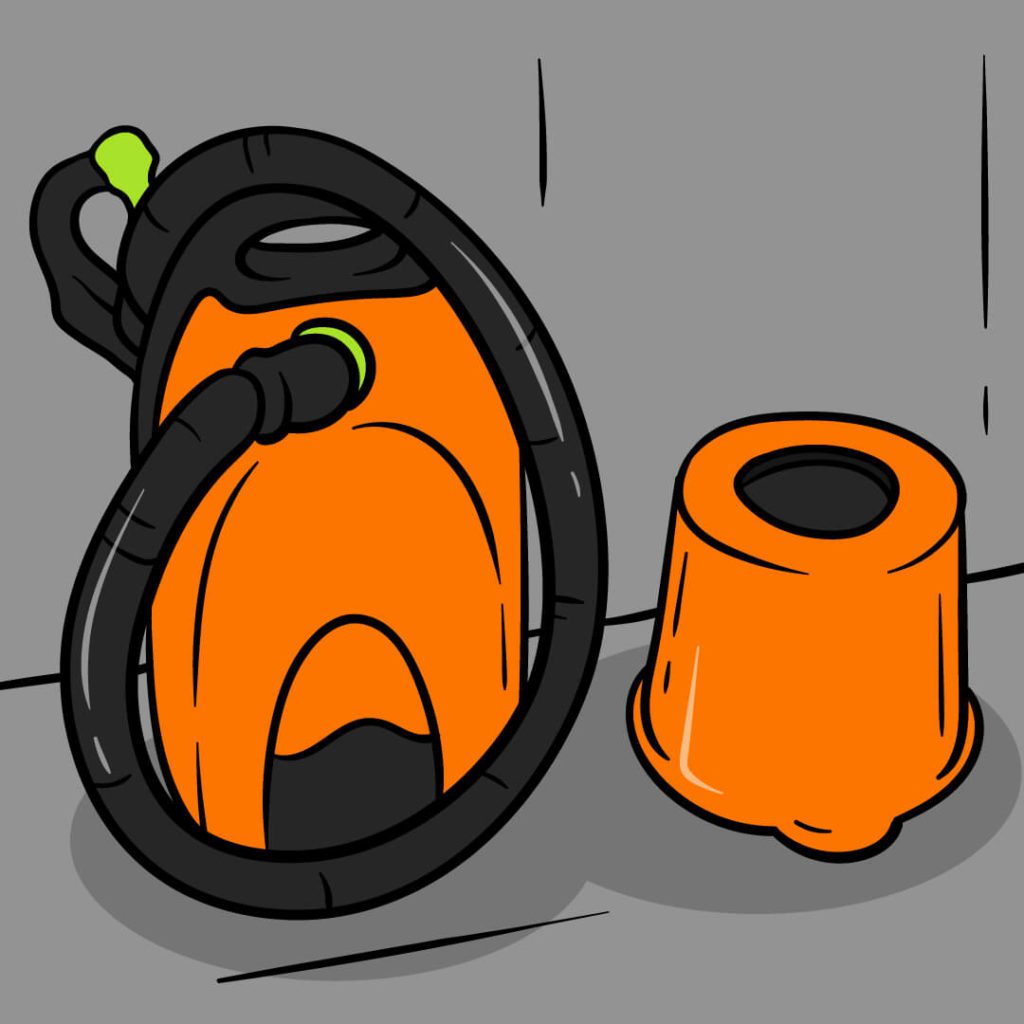
6. Hot Glue/Wooden Dowels/Screws
This method helps to ensure you don’t chip the paint on your vehicle. Place screws on the end of small wooden dowels. Use hot glue to affix the dowels to the dent. Apply the dowels in evenly spaced areas over the dent. After the glue dries, begin pulling on the dowels to pop the dent out of your vehicle.
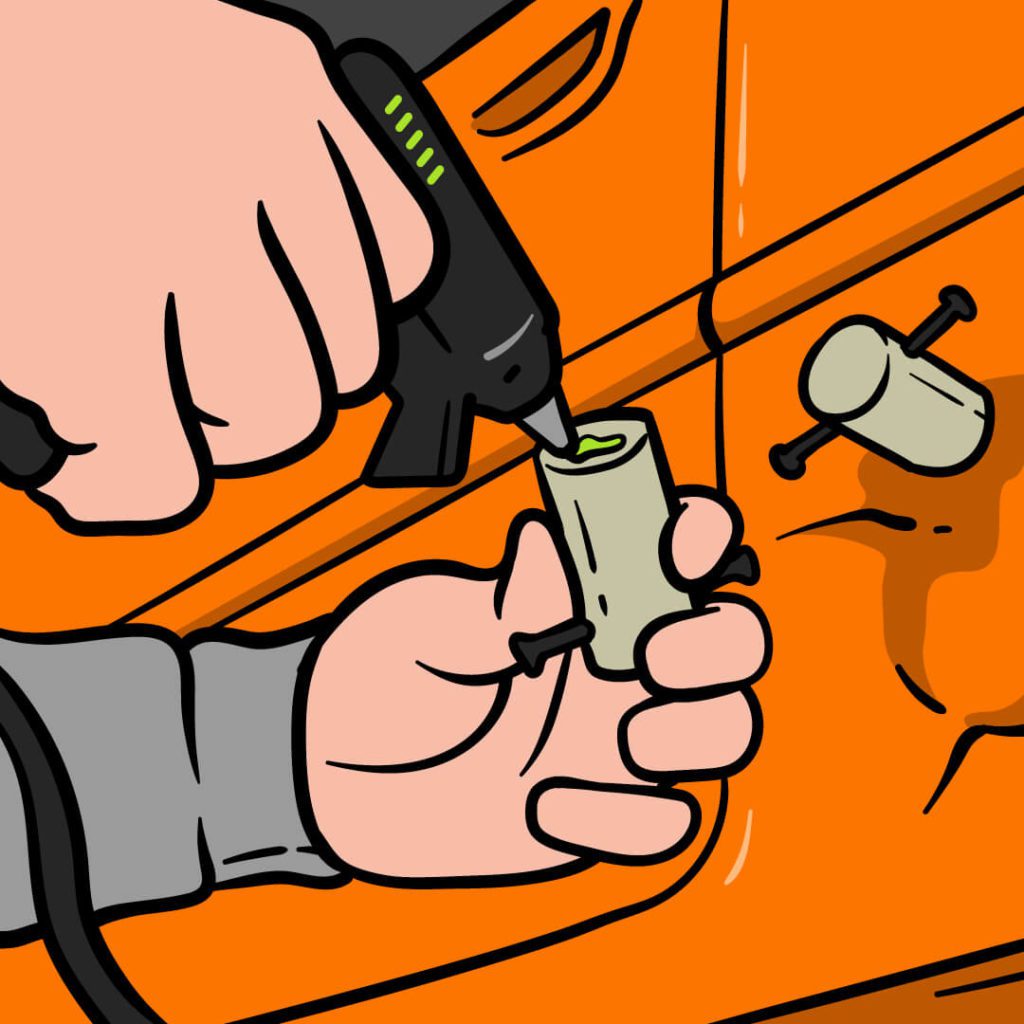
7. Apply Body Filler
Dents with creases will require body filler. Body filler is a substance that adheres well to metal, can be easily sanded, and lasts the life of the car. It’s great for dents that are too hard to repair otherwise, and you can find it at most body shops. Apply body filler first requires removing the paint, which also means needing sandpaper. Sand the paint a couple of inches wide of the dent, as well as the dent. Then mix your body filler. Apply the body filler smoothly; after about an hour it will be ready for sanding. After the sanding is done, apply the paint.
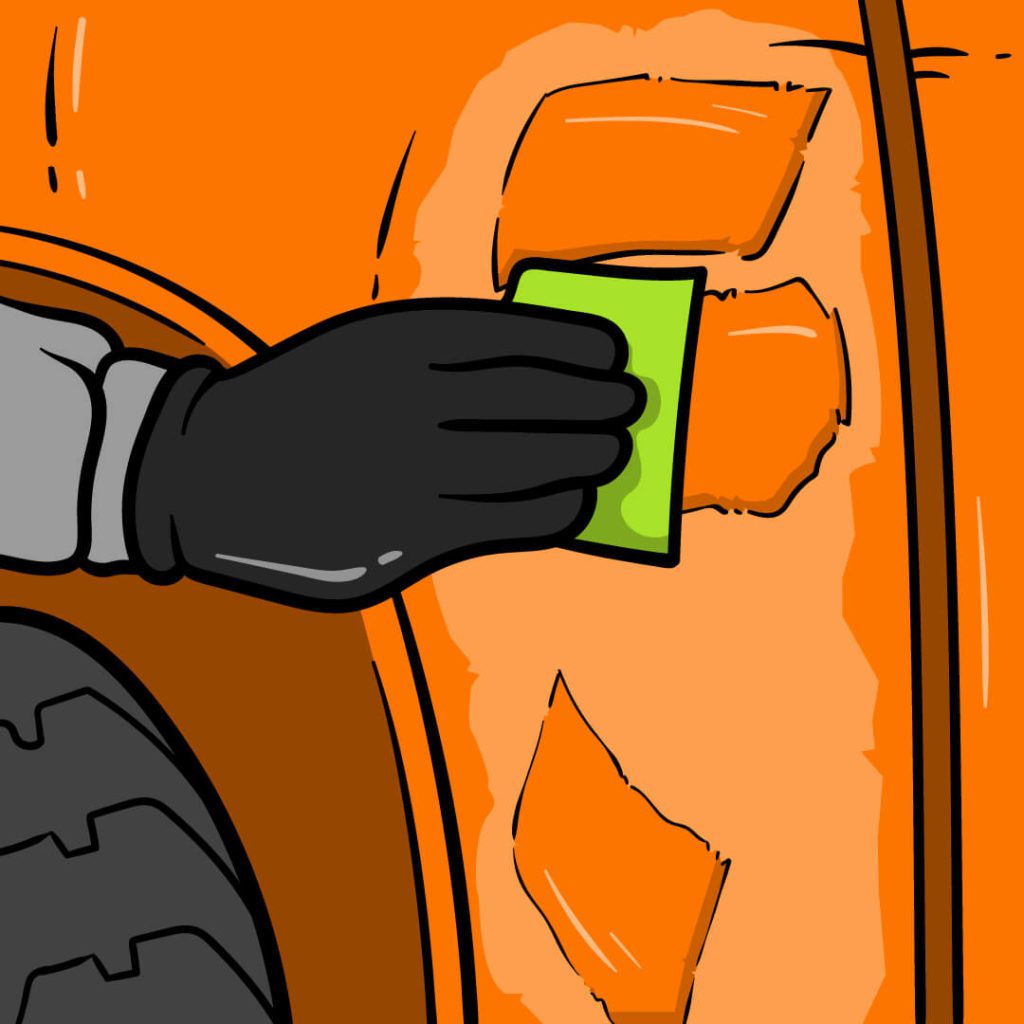
8. Specialty Dent Tool Kit
When all else fails, there is a toolkit you can invest in that’s made for removing dents in your car. Do your homework and search around; the right tools will work on the right dent. Some kits are made for smaller dents; some for larger dents.
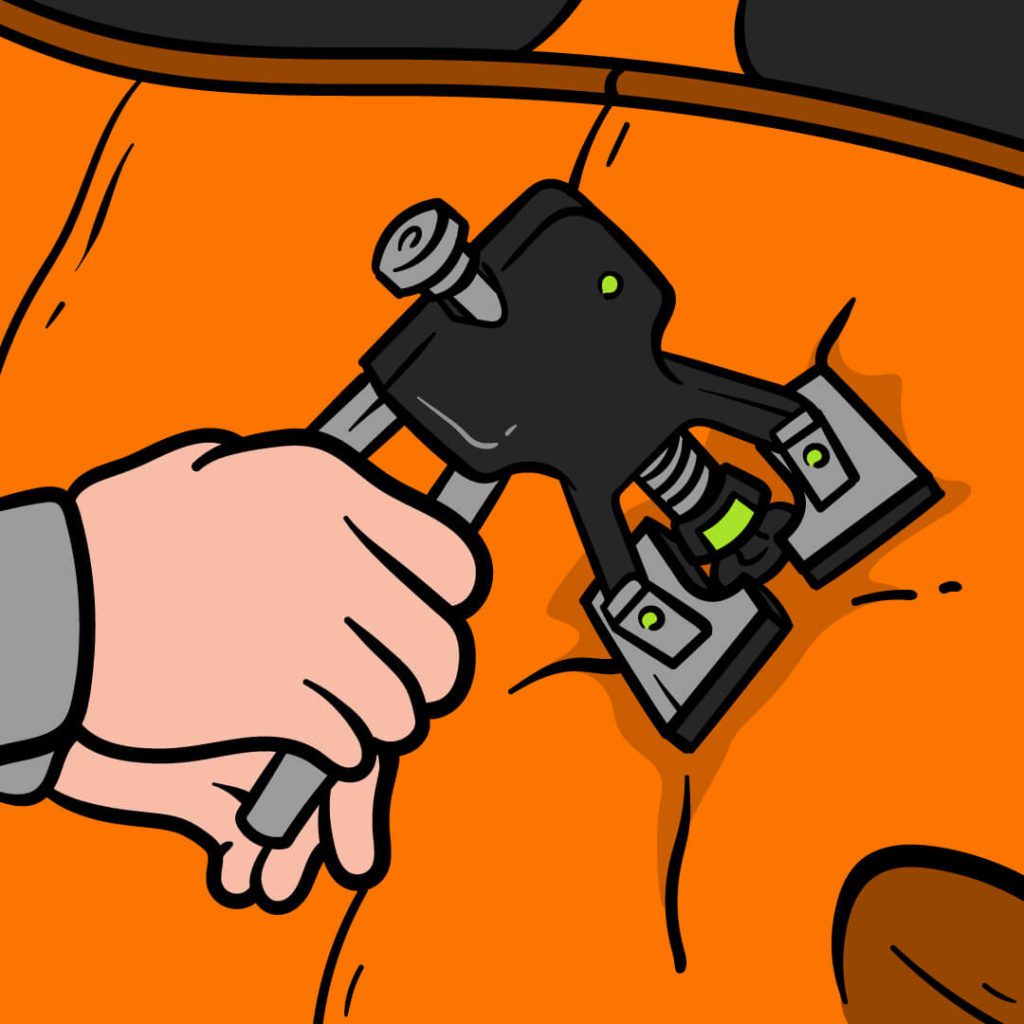
Final Thoughts
It’s difficult to enjoy the full life of a vehicle and not acquire dents. Either by your own doing or with the help of someone else, dents are almost unavoidable. They happen, but you shouldn’t have to spend an arm and a leg on removing them, especially if they’re small dents.
Should you have the misfortune of a dent in your car, hopefully one of these DIY methods will keep you from having to pay ridiculous prices at a body shop. If a dent is too large, deep, or has resulted in damaged metal, there is, unfortunately, no other way than taking it in for a repair.
Or, if you’re thinking about selling your car, get an online offer right now. Our mission is simple—to help you sell your car for top dollar, and fast.



